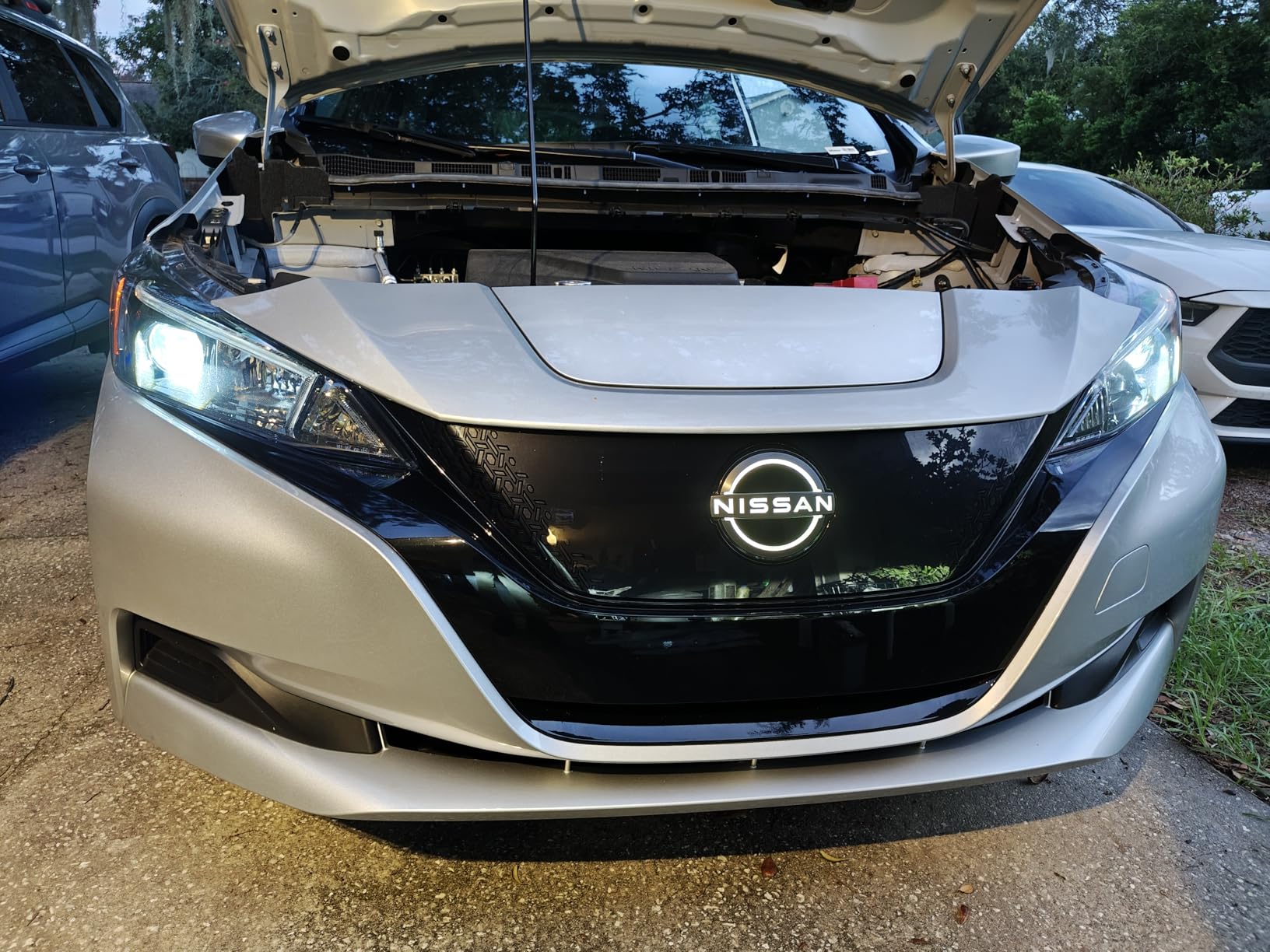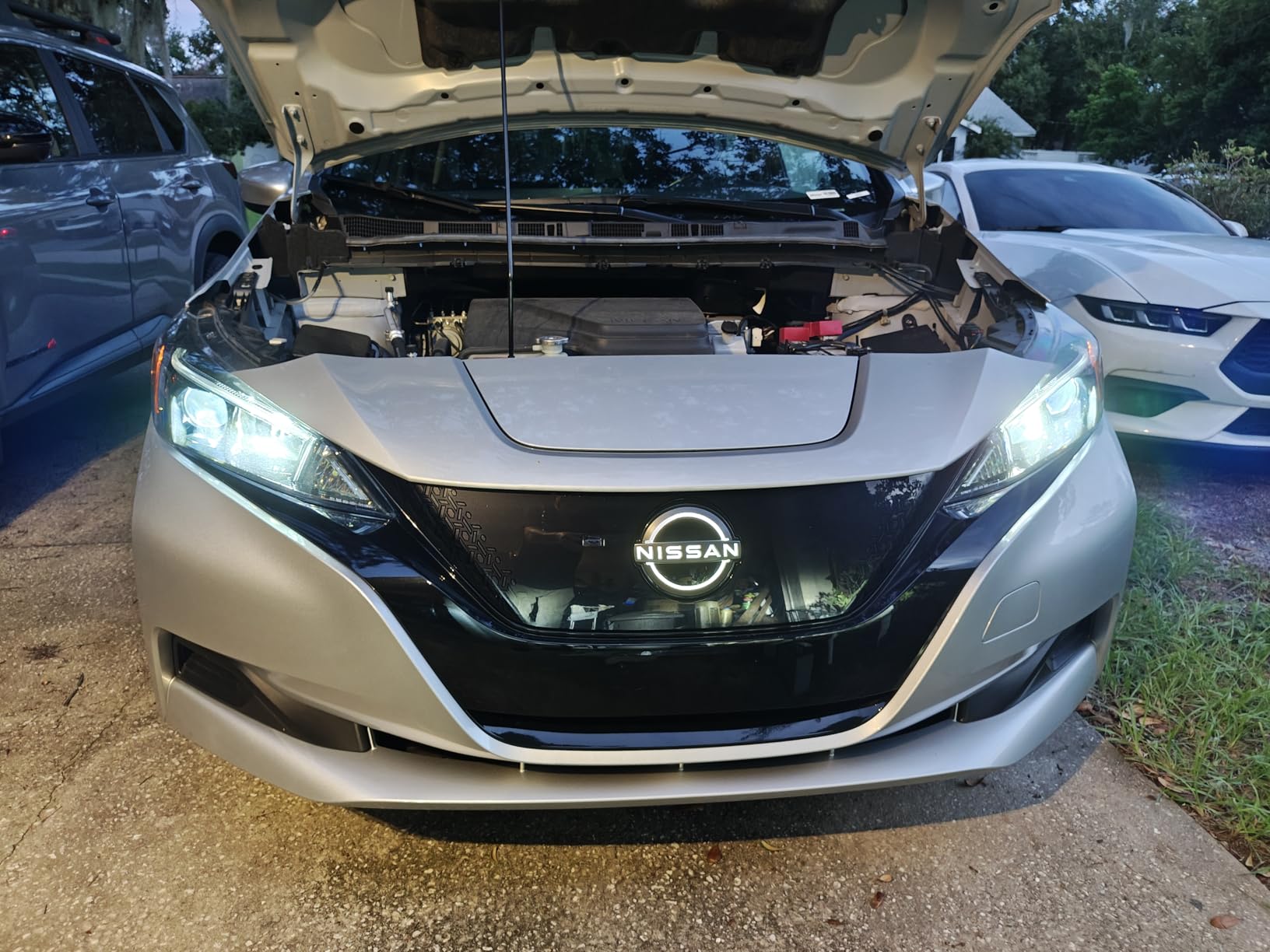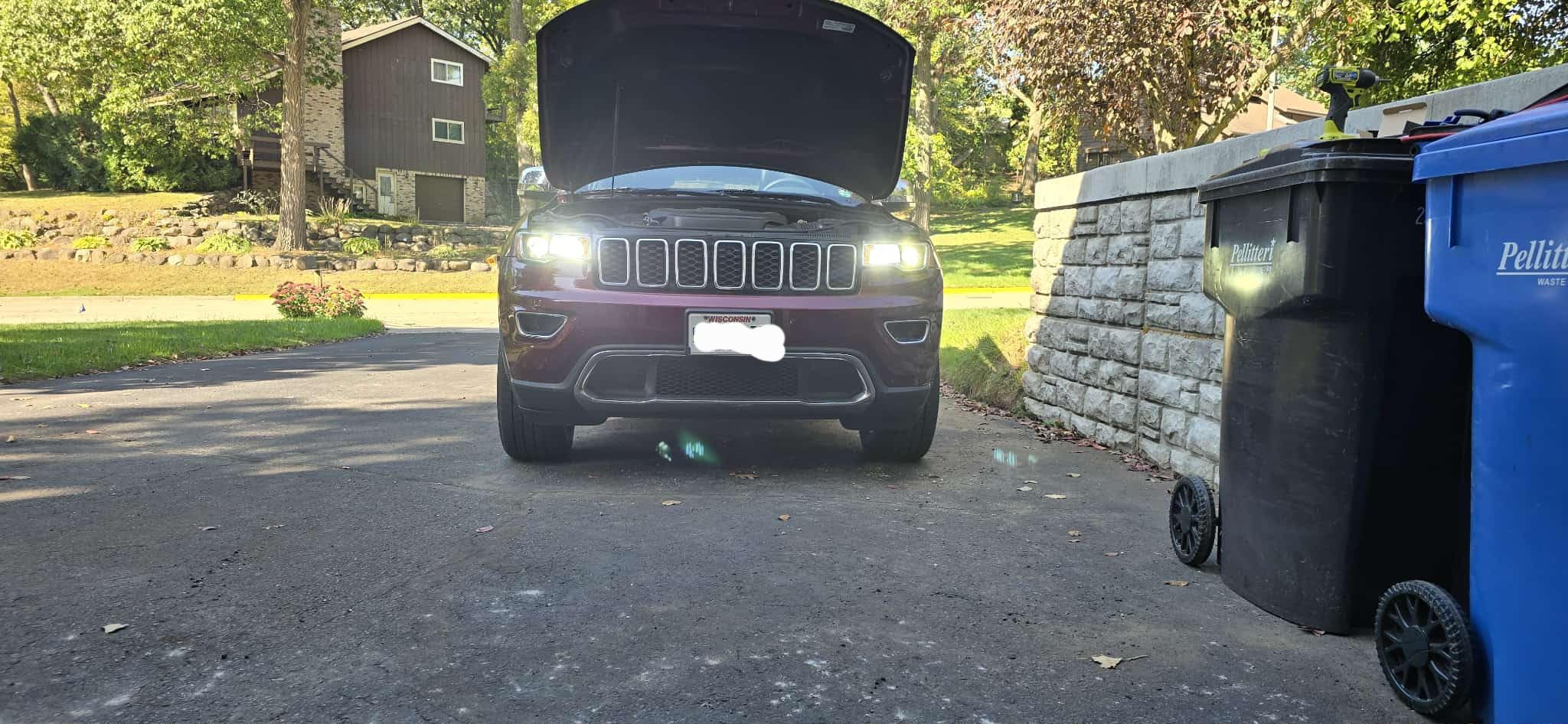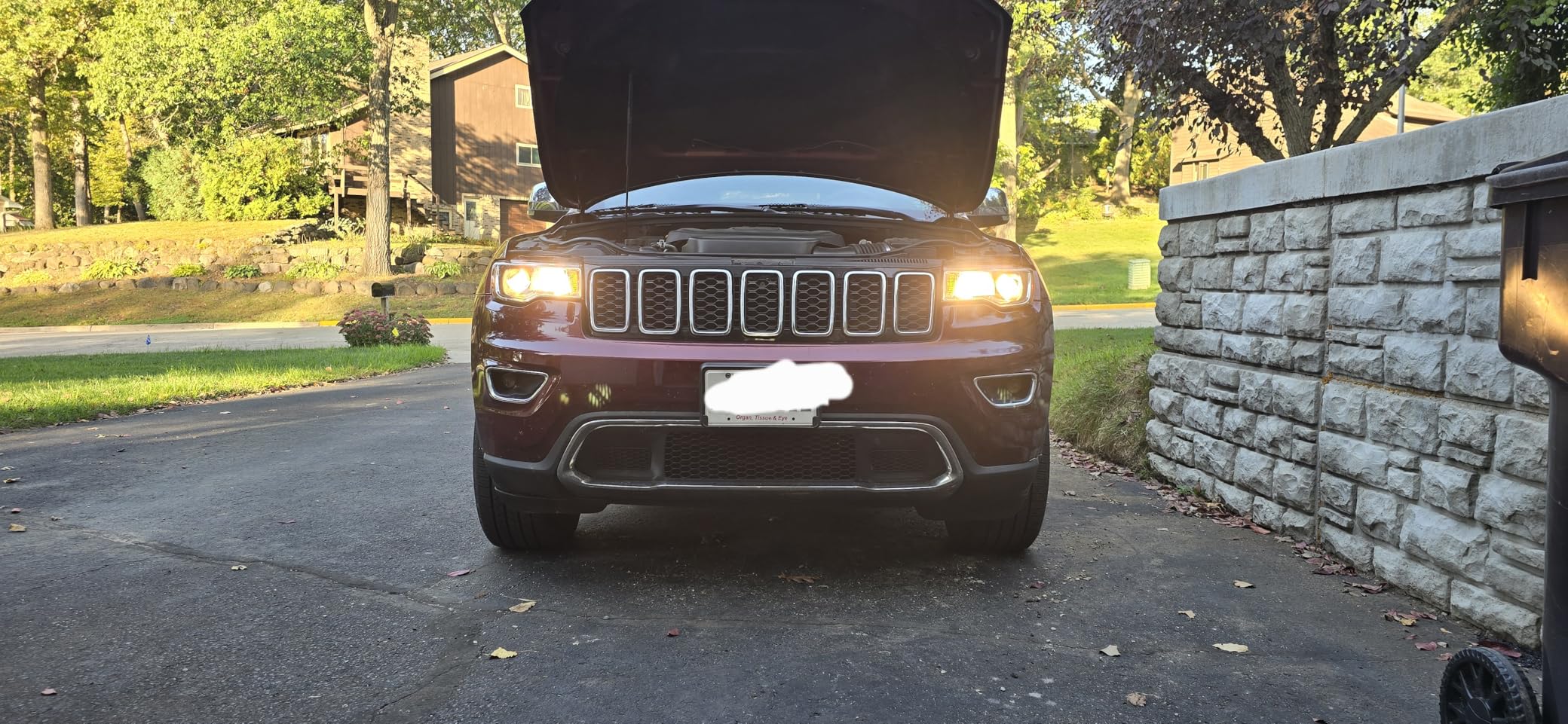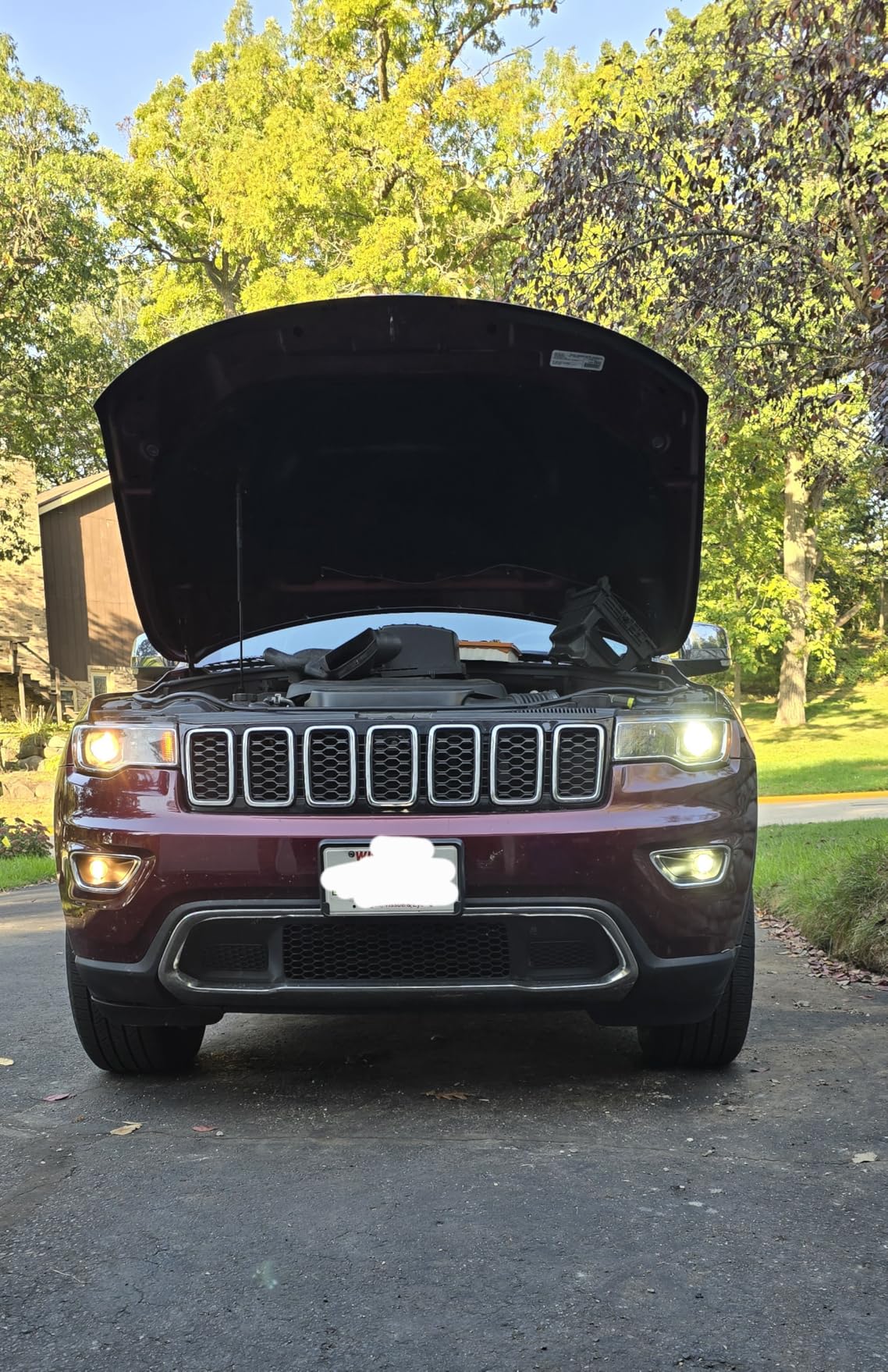Your headlights didn't come from the factory looking yellow and foggy – that cloudy mess develops over time as UV damage and oxidation eat away at the plastic surface. Besides making your car look older, those hazy lenses can seriously compromise your ability to see at night and may cause problems during vehicle inspections. Headlight restoration offers a cost-effective way to reverse years of damage and restore proper lighting performance. The results are often so impressive that many drivers wish they had done it sooner.
What Causes That Annoying Haze on Your Headlights?
That cloudy, yellow film covering your headlights doesn't happen overnight – it's the result of several factors working together to break down your headlight's protective surface. Most modern headlights are made from polycarbonate plastic, which is durable but not immune to environmental damage. Over time, exposure to the elements causes this clear plastic to deteriorate, creating that frustrating hazy appearance that makes your car look older and reduces light output.
What Turns Headlights Yellow: 3 Common Causes
The yellowing process happens when the outer layer of your headlight lens starts to break down at a molecular level. This plastic degradation occurs gradually, usually starting as a slight cloudiness that becomes more noticeable over 3-5 years. The protective UV coating applied during manufacturing eventually wears away, leaving the underlying plastic vulnerable to damage. Once this process begins, it accelerates quickly unless you take steps to protect or restore the surface.
UV Rays from Sunlight
Ultraviolet radiation from the sun is the biggest enemy of your headlights, with damage severity varying significantly based on your location and parking habits.
| Climate Zone | Yellowing Timeline | Damage Level |
| Desert/Southwest | 2-3 years | Severe |
| Sunny Coastal | 3-4 years | High |
| Moderate Climate | 4-5 years | Moderate |
| Northern/Cloudy | 5-7 years | Mild |
| Garage-Kept | 7+ years | Minimal |
Cars parked outside year-round show significantly more UV damage than garage-kept vehicles. The intensity varies by climate – headlights in sunny states like Arizona and Florida typically yellow faster than those in cloudier regions.
Oxidation Damage
Oxidation works much like rust on metal, but on the plastic surface, and it happens much like stages getting worse as time goes on.
1. Original Surface Dulling: The shiny surface starts to dull and lose its sparkle, generally after 2-3 years of exposure.
2. Microscopic Pitting: Tiny pits are created on the surface upon which oxygen has degraded the plastic, creating a rough texture.
3. Cloudiness That Can Be Seen: Light can no longer pass through cleanly since the compromised surface scatters the beam in numerous directions.
4. Yellowing That's Profound: The later oxidation creates a thick, chalky deposit that will drastically reduce light output and must be restored severely.
5. Structural Damage: In extreme cases, the plastic becomes so brittle that it cracks or suffers permanent damage.
Road Debris and Chemicals
Daily driving exposes your headlights to numerous harmful contaminants, each contributing to the breakdown process in different ways.
| Contaminant | Source | Damage Type |
| Road Salt | Winter De-icing | Accelerated coating breakdown |
| Bug Splatter | Highway Driving | Acidic etching and staining |
| Sand/Gravel | Construction Zones | Microscopic scratches |
| Car Wash Chemicals | Automatic Washes | Chemical burns and hazing |
| Acid Rain | Industrial Areas | Surface pitting and discoloration |
| Tree Sap | Parking Under Trees | Sticky residue that attracts dirt |
Small rocks and sand create microscopic scratches that give dirt and grime places to stick. Road salt used in winter climates is particularly harsh, accelerating the breakdown of protective coatings, while bug splatter and acid rain contribute to the deterioration process, creating the perfect storm for headlight damage.

Is Driving with Foggy Lights Safe?
No, driving with foggy, yellowed headlights is not safe and significantly increases your risk of accidents, especially during nighttime driving.
Cloudy headlights can reduce your output of light by 40% to 80%, severely diminishing your visibility down the road and your visibility to others. The National Highway Traffic Safety Administration reports that nearly half of all traffic fatalities occur on dark roads, so operational headlight systems are imperative for safety. If your headlights are too yellowed or cloudy, you're essentially driving with poor visibility in the worst possible driving conditions. Other than the safety aspect, many states also check for headlight clarity in their vehicle inspections nowadays, so cloudy headlights may cause your car to fail its yearly test and remain legally on the road. Knowing the signs you need to replace your headlight bulbs can help you address lighting problems before they become safety hazards.
Reduced Night Driving Visibility
Foggy headlights create a dangerous reduction in your ability to see and react to road hazards, with the impact becoming more severe as the damage progresses.
| Headlight Condition | Light Output Reduction | Visibility Distance | Reaction Time Impact |
| Clear/New | 0% | 500+ feet | Normal |
| Slightly Hazy | 20-30% | 350-400 feet | Slightly Reduced |
| Moderately Foggy | 40-60% | 200-300 feet | Significantly Reduced |
| Severely Yellowed | 60-80% | 100-200 feet | Dangerously Compromised |
At highway speeds of 60 mph, you need at least 300 feet to safely stop for an obstacle. With severely cloudy headlights reducing your visibility to just 100-200 feet, you may not have enough time to react to deer, pedestrians, or stopped vehicles ahead.
Failing Inspections A Real Risk
Vehicle safety inspections increasingly include headlight clarity checks, and foggy lights can result in automatic failure in many jurisdictions.
1. State Requirements Vary: Some states like Texas and Virginia specifically test headlight clarity and will fail vehicles with significantly clouded lenses.
2. Inspection Frequency: Annual inspections mean you could be stuck with an unregistered vehicle until repairs are made, often costing more than preventive restoration.
3. Insurance Implications: Driving with failed inspection status can void your insurance coverage and result in hefty fines if you're pulled over.
4. Resale Value Impact: Cars with obviously cloudy headlights often fail pre-purchase inspections, reducing their market value by hundreds of dollars.
5. Legal Liability: If you're involved in a nighttime accident and investigators find your headlights were significantly compromised, you could face increased liability for the incident.
What Are Your Options for Headlight Restoration?
Once your headlights start looking foggy and yellow, you have two broad options to restore them: performing the job yourself using a DIY kit or taking your vehicle to a professional service. Both options can yield excellent results but differ significantly in cost, time involvement, and level of expertise. DIY kits cost $15-30 and can restore moderately damaged headlights in 1-2 hours, while professional services cost $75-150 per pair but also last longer with a warranty. The best choice depends on your budget, available time, and the extent to which your headlights are damaged.
DIY Headlight Restoration Kits
Do-it-yourself restoration kits are more popular than ever because they're affordable, widely available at auto parts stores, and can produce phenomenal results when done correctly. Most systems use a step-by-step sanding and polishing routine to remove the damaged outer layer of plastic and restore clarity.
What's Inside a Typical Kit?
Most comprehensive DIY headlight restoration kits contain similar components designed to progressively remove damage and restore clarity.
| Kit Component | Purpose | Usage |
| Masking Tape | Protect surrounding paint | Apply before starting work |
| Sandpaper (multiple grits) | Remove oxidation layer | Start coarse, finish fine |
| Polishing Compound | Smooth surface scratches | Apply after sanding |
| Microfiber Cloths | Clean and buff | Multiple cloths needed |
| UV Protective Sealant | Prevent future damage | Final step application |
| Spray Bottle | Keep surface wet | Essential for wet sanding |
Some premium kits also include drill attachments, additional polishing pads, or specialized cleaning solutions to tackle particularly stubborn damage.
5 Pros and Cons of Going DIY
Fixing headlamps yourself is highly advantageous but has some disadvantages you might consider.
1. Cost Savings: DIY kits cost $15-30 compared to $75-150 for professional service, making them budget-friendly for multiple vehicles.
2. Immediate Availability: You can buy a kit and start work on the same day without appointments or waiting time.
3. Learning Experience: Restoring your headlamps successfully gives you valuable skills and confidence for future vehicle repair.
4. Time Flexibility: Do it on your time and your own pace, weekend afternoon or evening project.
5. Potential Limitations: The do-it-yourself work might not last as long as professionally done work, and extremely badly damaged headlights might need professional attention anyway.
Professional Headlight Restoration Service
Professional detailing utilizes commercial-grade equipment and techniques that tend to yield higher-quality, longer-lasting finishes than can be achieved with do-it-yourself efforts. Most automobile detailing shops, car washes, and specialty restoration services offer headlight restoration services at differing prices based on geographical location and quality of operation. Professional pros are skilled at dealing with different types of damage and can often restore headlights that DIY kits cannot satisfactorily fix. They typically also offer guarantees on their services, so you will feel more at ease paying the money.
When is Professional Help Best?
Certain circumstances make professional restoration the preferable choice even for the added upfront cost.
- Severe Damage: Clouded headlights with major yellowing, cracked covers, or heavy pitting typically require the advanced equipment and ability of a professional.
- High-End or Performance Vehicles: High-end vehicles with complex headlight assemblies may require the skill of a specialist to avoid damage when restoring.
- Time Limits: If you're in a hurry for a certain inspection or sale, professionals are usually able to have the job done in less than an hour.
- Warranty Coverage: Professional services typically include 1-2 year warranties, which will protect against re-clouding before its time.
- Multi-Vehicle Requirements: If you have more than one car to restore, professional bulk pricing might be less expensive than purchasing a bunch of do-it-yourself kits.
- Past Failed DIY Try: If you've previously tried a DIY kit and fluffed it, professionals have superior materials and techniques that can salvage the process.

What Results Can You Expect from Headlight Restoration?
Headlight restoration can produce truly dramatic improvements that often surprise car owners with how much brighter and clearer their lights become. A properly executed restoration typically improves light output by 50-80%, transforming yellow, cloudy lenses back to near-original clarity. The visual transformation is often so striking that many people assume you've replaced the entire headlight assembly rather than just restored the existing one. However, the longevity of these results depends heavily on the quality of the restoration work and how well you maintain the headlights afterward, with proper care extending the clear appearance for 2-4 years.
Before and After Transformation
The visual impact of headlight restoration is often the most compelling reason people choose this service, with results that can make a 10-year-old car look significantly newer.
| Damage Level | Before Condition | After Restoration | Light Improvement | Visual Impact |
| Mild Haze | Slightly cloudy, dull | Crystal clear, bright | 30-50% increase | Noticeable improvement |
| Moderate Yellowing | Yellow tint, reduced brightness | Clear with minor imperfections | 50-70% increase | Dramatic difference |
| Heavy Oxidation | Deep yellow, very dim | Nearly new appearance | 70-85% increase | Shocking transformation |
| Severe Damage | Brown/opaque, barely functional | Clear but may show minor marks | 60-80% increase | Complete restoration |
Most people are genuinely amazed at how much the restoration improves their car's overall appearance. The headlights often become the brightest, clearest part of the front end, making other aging components like the grille or bumper look outdated by comparison. Professional photography techniques using before/after shots in identical lighting conditions consistently show improvements that exceed customer expectations.
Maintaining Long-Term Clarity
The key to getting maximum value from your headlight restoration investment lies in proper maintenance and realistic expectations about longevity.
- Immediate Protection: Apply UV protective sealant within 24 hours of restoration to lock in the clear finish and prevent rapid re-oxidation.
- Regular Cleaning Schedule: Wash headlights weekly with mild soap and water, avoiding harsh chemicals or abrasive cleaners that can damage the new surface.
- Reapply Sealant Annually: Most protective coatings last 12-18 months before needing renewal, which costs $10-20 and takes 15 minutes per headlight.
- Parking Considerations: Garage parking or using UV-blocking car covers can double the lifespan of restoration results by reducing sun exposure.
- Quality Matters for Longevity: Professional restorations with high-grade sealants typically last 2-4 years, while basic DIY jobs may need redoing in 12-18 months.
- Warning Signs to Watch: Light hazing after 18-24 months is normal, but rapid yellowing within 6 months usually indicates poor initial work or inadequate protection.
- Cost-Effective Maintenance: Annual touch-up treatments cost $20-40 and can extend restoration life significantly, making them much more economical than complete re-restoration every few years.
Don't Let Yellowing Headlights Put You at Risk
Cloudy, yellowing headlights aren't just ugly – they're genuinely dangerous and can cut your nighttime visibility in half. The good news is that restoration really works, whether you tackle it yourself with a $20 kit or go professional for longer-lasting results. Pairing headlight restoration with LED headlight bulbs maximizes visibility and safety.With proper care and annual sealant touch-ups, you can keep those headlights crystal clear for years to come. Your safety is worth way more than the small cost of restoration, so don't wait until your next night drive becomes a white-knuckle experience.
Frequently Asked Questions About Headlight Restoration
Q1: How much does it cost to restore headlights as opposed to replacing them?
DIY restoration kits are $15-30, whereas professional restoration is $75-150 per pair. New headlight assemblies are $200-800 per piece depending on your car, so restoration is roughly 10 times less expensive than replacement in most instances.
Q2: How long does the restoration process actually take?
DIY kits are done in 1-3 hours of actual labor, professional work usually accomplishes the task within 30-60 minutes. Protective sealant curing takes another 2-4 hours before driving.
Q3: Will I be able to restore headlights in cold weather?
Yes. Most restoration products work best in temperatures of 50°F and higher. Frigid weather slows curing and can cause sealants to apply irregularly. If you can, get the car into a warm garage or wait until it warms up.
Q4: Will restoration work on cracked or badly scratched headlights?
Small surface scratches and scratches can be repaired, but huge cracks that go through the plastic will need to be replaced most likely. You can typically tell if a scratch is too deep by whether it will catch your fingernail or not.
Q5: Do you need to take the headlights off of your vehicle?
No, this is most restoration work accomplished with the headlights still on. Just mask the surrounding area to the paint and bumper with painter's tape. Removal is only necessary when the headlights themselves are severely damaged and will require professional shop repairs.
Q6: Why do restored headlights turn yellow so quickly afterward?
Instant re-yellowing usually happens when the protective sealant was not applied properly or was even skipped, or when cheap restoration products were used. Quality is also crucial in the restoration process itself and in the protective coating achieved.
Q7: Can we put normal car wax on restored headlights?
No. Regular car wax is not UV-resistant and tends to attract dirt. Use only headlight protection products with UV blockers to avoid re-oxidation.
Q8: Is restoring headlights on an older car worth it?
Yes, especially if the vehicle is mechanically sound. Refinished headlights can pay back $200-500 in resale value and add dramatically to safety. Even on a 15-year-old car, the look and operation are worth the cost.
